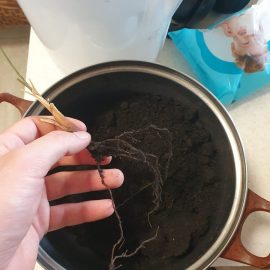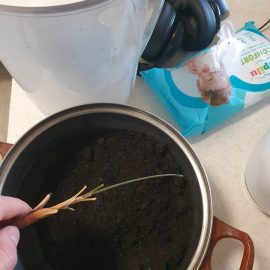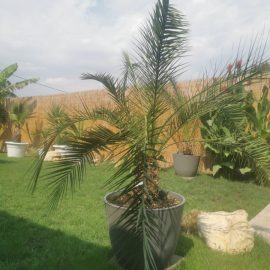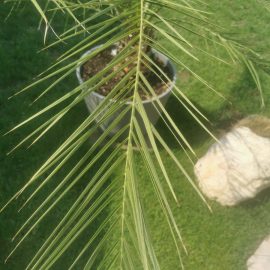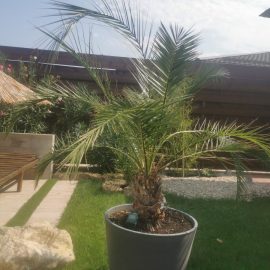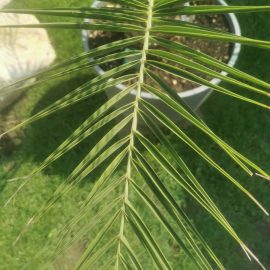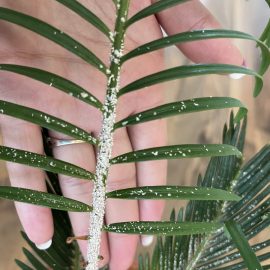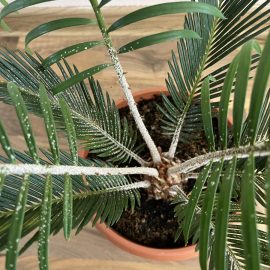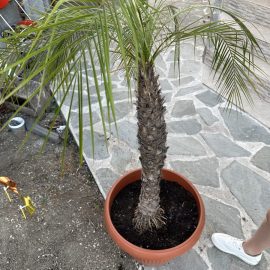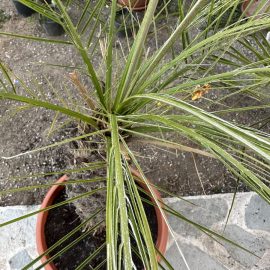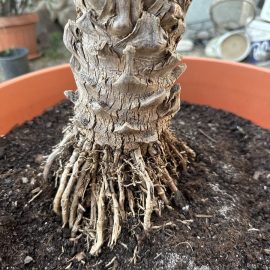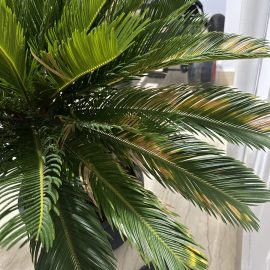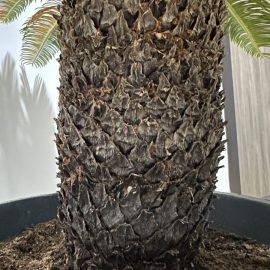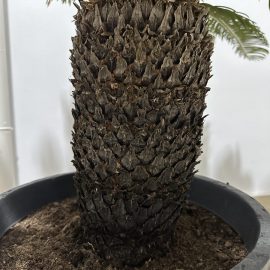Cycas revoluta, plant care and growing guide

Cycas revoluta or Japanese sago palm is a prehistoric species in the Cycadaceae family. It is native to the tropics and subtropics, Japan, China and Malaysia. It has a longevity of up to 100 years. There are 15 known species of the genus Cycas, of which only Cycas revoluta can be grown as an indoor plant.
In pots, it has heights between 25 and 70 cm. It has a conical, semi-wooden trunk, which is formed from the bases of the petioles of the leaves that dry out. The leaves are similar to those of palm trees, are spiky, with a central rib. They are dark green, with a slightly glossy surface. In the middle of the bush, they develop cone-shaped inflorescences, male or female, located on different plants.
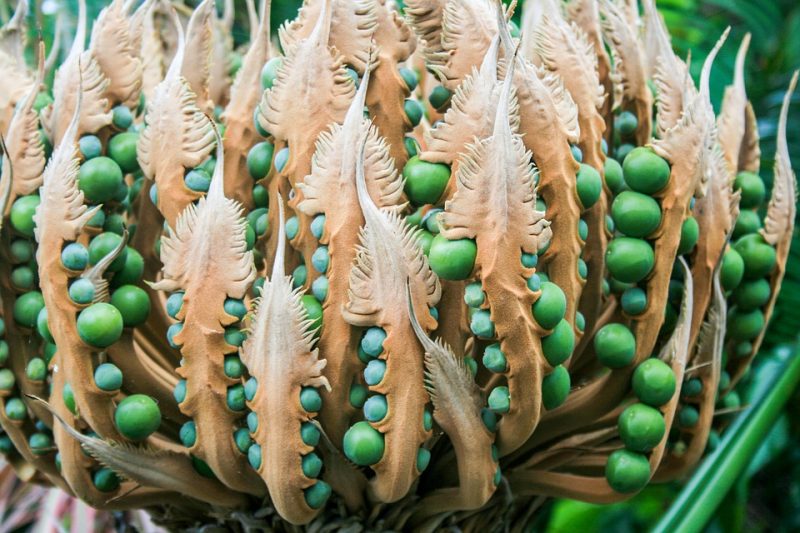
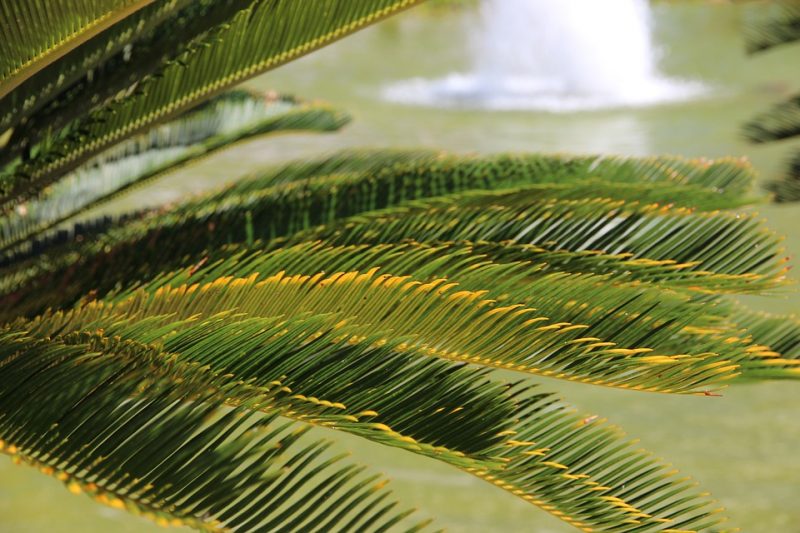
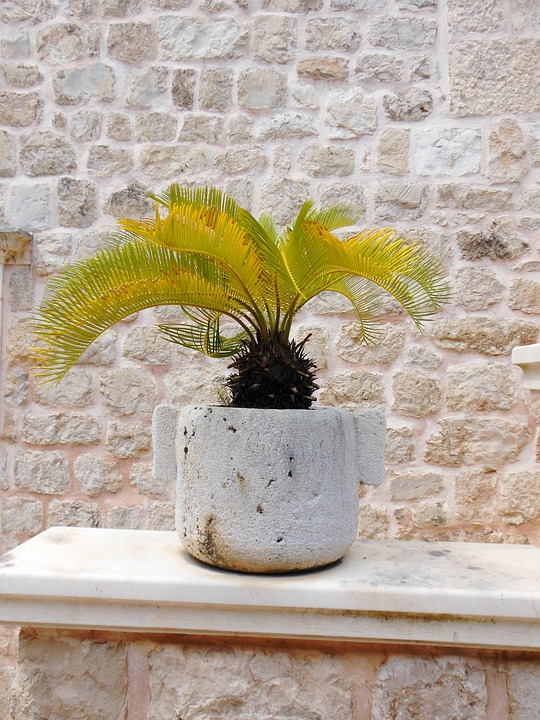
Care
Light. It grows best if placed in sunlight, indoors. From May to October, it can be kept in the garden, in partial shade. During the summer, if it is located outdoors, it can withstand temperatures of up to 24-30° C, and in winter, it needs temperatures of 16-18° C.
Substrate. It must drain the water well, in order to avoid high humidity near the roots and it should have a slightly acid-neutral pH.
Recommended products
-
You can find products on a different store
Change Store -
You can find products on a different store
Change Store -
You can find products on a different store
Change Store -
You can find products on a different store
Change Store -
You can find products on a different store
Change Store -
You can find products on a different store
Change Store -
You can find products on a different store
Change Store -
You can find products on a different store
Change Store -
You can find products on a different store
Change Store -
You can find products on a different store
Change Store -
You can find products on a different store
Change Store -
You can find products on a different store
Change Store -
You can find products on a different store
Change Store -
You can find products on a different store
Change Store -
You can find products on a different store
Change Store -
You can find products on a different store
Change Store -
You can find products on a different store
Change Store -
You can find products on a different store
Change Store -
You can find products on a different store
Change Store -
You can find products on a different store
Change Store -
You can find products on a different store
Change Store -
You can find products on a different store
Change Store -
You can find products on a different store
Change Store -
You can find products on a different store
Change Store
Watering. It should be done so that the soil remains moist. Generally, it can be watered once a week or every two weeks. During the winter months, it is recommended that watering be done moderately, leaving the surface layer of the substrate to dry before you water it again. Also, during the hot season or when the air is dry, it is recommended to spray the leaves with non-calcareous water once a day.
Fertilization. It should be done during the vegetative growth period, with specific fertilizers, enriched with microelements.
Recommended products
-
You can find products on a different store
Change Store -
You can find products on a different store
Change Store -
You can find products on a different store
Change Store -
You can find products on a different store
Change Store -
You can find products on a different store
Change Store -
You can find products on a different store
Change Store -
You can find products on a different store
Change Store -
You can find products on a different store
Change Store -
You can find products on a different store
Change Store -
You can find products on a different store
Change Store -
You can find products on a different store
Change Store -
You can find products on a different store
Change Store -
You can find products on a different store
Change Store -
You can find products on a different store
Change Store -
You can find products on a different store
Change Store -
You can find products on a different store
Change Store -
You can find products on a different store
Change Store -
You can find products on a different store
Change Store -
You can find products on a different store
Change Store -
You can find products on a different store
Change Store -
You can find products on a different store
Change Store -
You can find products on a different store
Change Store -
You can find products on a different store
Change Store -
You can find products on a different store
Change Store
Repotting. It should be done once every 3 years or when the roots have grown quite a lot and occupy almost the entire pot. It has sensitive roots, so it is recommended that the transplanting be done without removing the soil from them.
Propagation. In some cases, Cycas plants produce lateral shoots, which can be removed for propagation. The shoots are removed in early spring. Propagation can also be achieved through seeds, but very rarely, due to the slow growth rate of the plant.
Recommended products
-
You can find products on a different store
Change Store -
You can find products on a different store
Change Store -
You can find products on a different store
Change Store -
You can find products on a different store
Change Store -
You can find products on a different store
Change Store -
You can find products on a different store
Change Store -
You can find products on a different store
Change Store -
You can find products on a different store
Change Store -
You can find products on a different store
Change Store -
You can find products on a different store
Change Store -
You can find products on a different store
Change Store -
You can find products on a different store
Change Store -
You can find products on a different store
Change Store -
You can find products on a different store
Change Store -
You can find products on a different store
Change Store -
You can find products on a different store
Change Store -
You can find products on a different store
Change Store -
You can find products on a different store
Change Store -
You can find products on a different store
Change Store -
You can find products on a different store
Change Store -
You can find products on a different store
Change Store -
You can find products on a different store
Change Store -
You can find products on a different store
Change Store -
You can find products on a different store
Change Store
Pests. Cycas revoluta is susceptible to infestation with mites, woolly apple aphids, and European fruit lecanium. They can be controlled with specific insecticides.
Recommended products
-
You can find products on a different store
Change Store -
You can find products on a different store
Change Store -
You can find products on a different store
Change Store -
You can find products on a different store
Change Store -
You can find products on a different store
Change Store -
You can find products on a different store
Change Store -
You can find products on a different store
Change Store -
You can find products on a different store
Change Store -
You can find products on a different store
Change Store -
You can find products on a different store
Change Store -
You can find products on a different store
Change Store -
You can find products on a different store
Change Store -
You can find products on a different store
Change Store -
You can find products on a different store
Change Store -
You can find products on a different store
Change Store -
You can find products on a different store
Change Store -
You can find products on a different store
Change Store -
You can find products on a different store
Change Store -
You can find products on a different store
Change Store -
You can find products on a different store
Change Store -
You can find products on a different store
Change Store -
You can find products on a different store
Change Store -
You can find products on a different store
Change Store -
You can find products on a different store
Change Store
In addition:
- if kept in a pot in the garden, it is recommended that it be brought indoors in winter to avoid frost damage.
- in large plants, it is recommended to brush the trunk to remove the moss formed on it.
- the drying of the tips of the leaves can be an effect of dry air in the room, in this case it is recommended to spray the plants with water.
- yellowing of the leaves at the base of the trunk is a normal process, and they must be removed.
- caution! all parts of the Cycas revoluta plant are toxic.














































































































































































































































































































































































































































